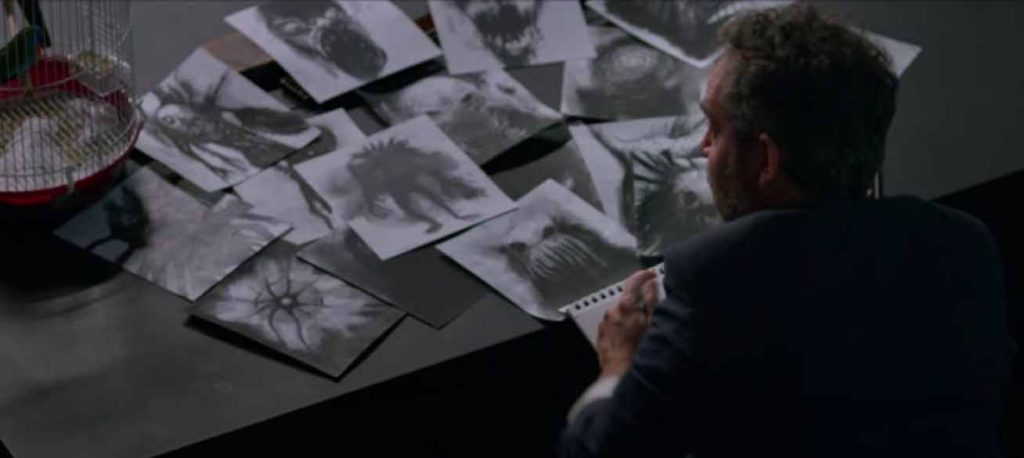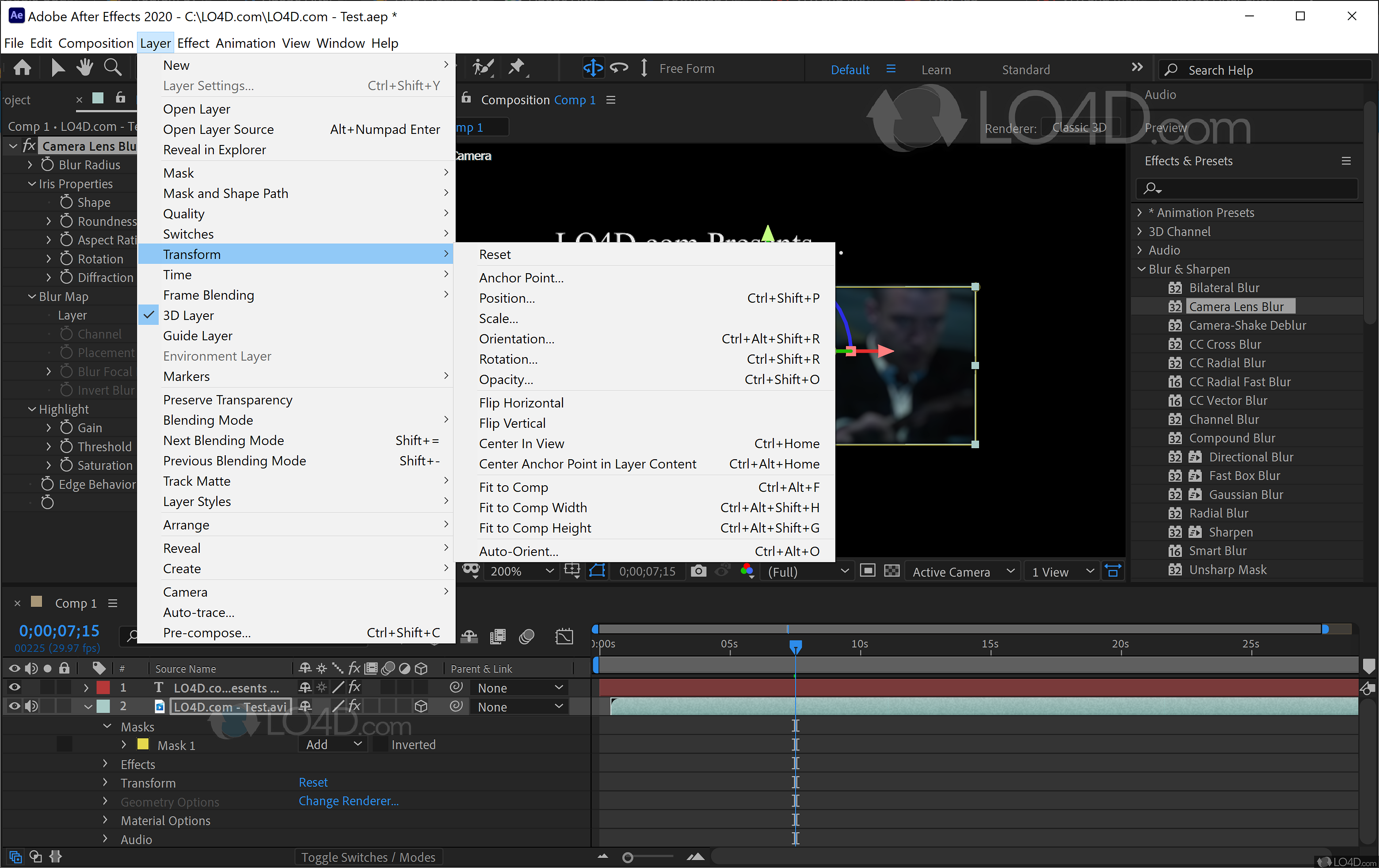- After Effects Lens Blur
- Fast Box Blur After Effects Download
- Fast Box Blur After Effects
- Fast Box Blur After Effects Missing

In our latest After Effects video tutorial, learn the basic elements of compositing for more realistic results in your next project.
Gaussian Blur is now GPU accelerated, and it's the one that they suggest as the successor to fast blur. They've even included a script to update old projects to use the new blur, look for it in fileScriptsUpgradeLegacyBlurs. If you want one that uses the same maths as fast blur, i.e. Is the most visually similar, then I think Box Blur is the one.
In this tutorial, we’re going to examine some compositing basics that are essential for working in After Effects. These tips will help you achieve more realistic results when you’re adding things into a scene, such as a 3D model, a background matte painting, or even elements like explosions and debris.
All right, let’s get started!
- Gaussian Blur is now GPU accelerated, and it's the one that they suggest as the successor to fast blur. They've even included a script to update old projects to use the new blur, look for it in fileScriptsUpgradeLegacyBlurs. If you want one that uses the same maths as fast blur, i.e. Is the most visually similar, then I think Box Blur is the one.
- Rowbyte announced Fast Bokeh - a plug-in for After Effects that creates a smooth Depth of Field bokeh blur using a Depth Map. It's very fast, handles edges properly and easy to use. Fast Bokeh is different from all the other Lens Blur plug-ins out there because it meets the three following requirements.
- Box blur looks as same as Gaussian and Fast blur but what’s the difference, it creates a boxy shape blur. When we look closely we can see the boxy blur in the below image. The same option repeat edge pixel which has fast blur has existed in box blur also. If we disable the repeat edge pixel, the smooth edges will disappear.
- Introduction to Blur in After Effects. Blur is nothing but making something unclear when we are willing to hide something we can use this option, blur in Photoshop, Premiere cc and After effects based on the requirement we can change the software when we take a picture from DSLR we can blur the background of an object if we take a normal picture we can make blur in editing software like.
You may have heard the adage that “the best visual effects are the ones you don’t know are there.” And that is what we’re striving for with these compositing tips. No matter what you’re adding into your scene, we want the integration to look seamless. The four basic elements of compositing we’re going to look at are: color saturation, sharpness, grain, and color tint.
Color Saturation
When you add an asset into a scene in post (whether it’s a CG model, keyed live-action footage, or even just a photo), typically these assets will have a high color saturation. This isn’t necessarily a bad thing. However, when you look at colors in the real world, things are not nearly as saturated as say a 3D model might be. This is because colors have a tendency to become washed out in natural lighting conditions. So the first step is to dial down the color saturation. I recommend using the Lumetri Color effect and dialing down the saturation under the “Basic Corrections” controls.
Sharpness

Sharpness is the next thing to take a close look at. You’ll want to match the sharpness or, in many cases, the softness of your original footage. Use the Lumetri Color effect to adjust the sharpness as well. Under the Creative controls, you can dial the Sharpness setting up or down. I typically will set this around -10 for CG elements like the billboard added to the town-square scene. Dialing down the sharpness can also help reduce any aliasing issues that might occur on CG elements.
Your personal fingerprint - simple and safe! Whenever you want to check the identity of your customers, play it safe with the BitPayment GmbH. We send an unlock code to your customers indicated in the reference field of a money transfer. Rules Of bitpayment.biz: 1. Objects of Regulation. These Terms govern the process of interactive cooperation between the Client and the Company on the basis of the website, the processes of financial transactions, payments and receipt of funds, as voluntary investments, as well as anything else that possibly, but not necessary, may arise in the process of cooperation between the Parties. Download the BitPay App to securely send, receive and store cryptocurrency. Buy and exchange crypto all in one app. Incorrect status?Write to us. Paying 0 (0) Waiting 0 (1) Problem 2 (0) Scam 5 (2) Deposits: $ 3 382. Listings: $ 1 750. Plans: 5% hourly for 48 hours, 8% hourly for 34 hours, 150% after 1 day, 10% hourly for 20 hours, 25% hourly for 8 hours, 800% after 3 days + principal back. Bitpayment.
Grain
After Effects Lens Blur
Add grain on top of your composite elements to match your original footage grain. This helps prevent the element from looking frozen because the grain movement will add some subtle variance. I recommend using the Noise effect located under “Noise & Grain” in the effects list. Try and match the real-world grain of your footage by looking at how much grain shows up in the darker areas of your image. Adding grain can also help break up any unwanted color banding that might occur.
Color Tint
Fast Box Blur After Effects Download

Adjusting the color tint on your composite element is my favorite part of the compositing process. This is where everything comes together nicely. Matching the color tint of the scene is really easy to do. Create an adjustment layer, and then add a “Fast Box Blur” to that layer, directly above your original footage. Set the blur level to around 15 to 30. (This helps blend all of the colors together smoothly.) Next, apply the Tint effect to your composite element and bring the “Amount to Tint” level down to 0%. On the Tint effect, for “Map Black to,” select a darker color of your scene. Do the same for “Map White to”, but select a lighter color in your scene. Now you can turn off the adjustment layer and set the “Amount to Tint” level around 30-40%.
Extra Tips
Fast Box Blur After Effects
Don’t be afraid to take advantage of different blending modes if you’re compositing in elements like fire, smoke, or explosions. (I use a fire asset in the tutorial from RocketStock’s free Action Pack Lite!) If the element you’re applying a blending mode to looks too faint, just duplicate it — that should help fill back in some transparency and color vibrance. You can also create another top duplicate copy and apply a blur to it to create a secondary glow.
Finally, use the “Camera Lens Blur” effect to composite elements close to the camera and out of focus. You can duplicate those layers as well to fill back in any transparency issues. It is also a good idea to apply some grain on top of the Camera Lens Blur effect to help simulate image noise.
Looking for more on Adobe After Effects? Check out these articles.
Sign In
Fast Box Blur After Effects Missing
Register
- Access to orders in your account history
- Ability to add projects to a Favorites list
- Fast checkout with saved credit cards
- Personalized order invoices
Create Account
